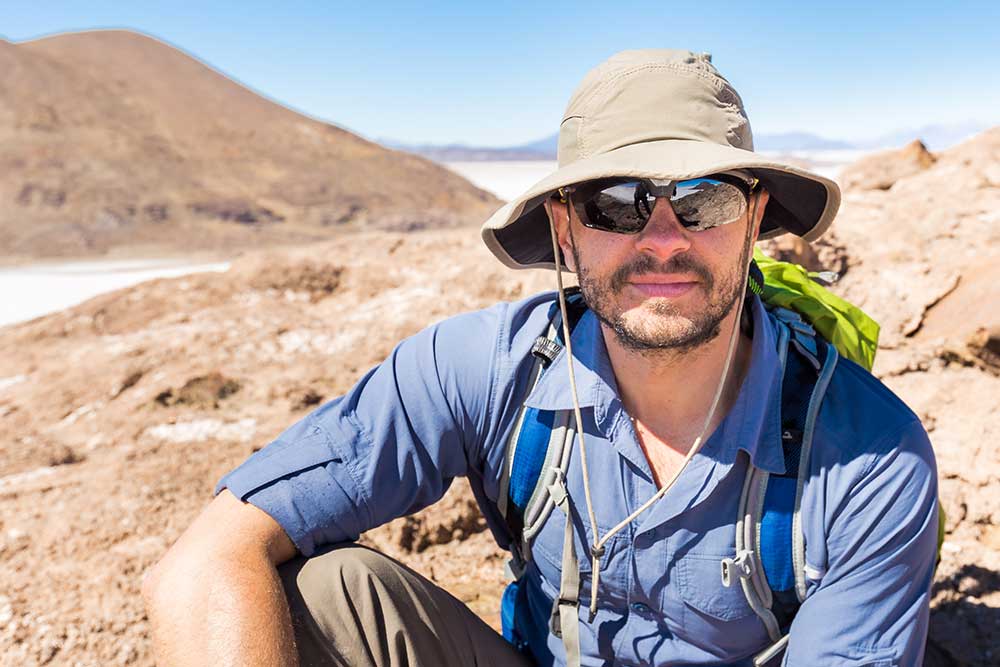All Categories
Featured
Table of Contents
What Should I Do To Be A Geophysicist? in Tuart Hill WA 2020

The primary design for the radial structure of the interior of the Earth is the initial reference Earth design (PREM). Some parts of this design have actually been upgraded by current findings in mineral physics (see post-perovskite) and supplemented by seismic tomography. The mantle is primarily made up of silicates, and the boundaries between layers of the mantle follow stage transitions.

Schematic of Earth's magnetosphere. Flows from left to.
Inside the magnetosphere, there are relatively dense areas of solar wind particles called the Van Allen radiation belts. Geophysical measurements are usually at a specific time and place.
Bachelor's Degree In Geophysics - Degrees & Programs in Willetton Aus 2020
A three-dimensional position is calculated using messages from 4 or more noticeable satellites and referred to the 1980 Geodetic Recommendation System. An option, optical astronomy, integrates astronomical collaborates and the local gravity vector to get geodetic collaborates. This approach just offers the position in 2 coordinates and is more hard to utilize than GPS.
Relative positions of 2 or more points can be identified utilizing very-long-baseline interferometry. Gravity measurements became part of geodesy due to the fact that they were required to associated measurements at the surface area of the Earth to the referral coordinate system. Gravity measurements on land can be used gravimeters deployed either on the surface area or in helicopter flyovers.
Water level can also be determined by satellites using radar altimetry, adding to a more precise geoid. In 2002, NASA introduced the Gravity Recovery and Environment Experiment (GRACE), in which two twin satellites map variations in Earth's gravity field by making measurements of the range between the 2 satellites utilizing GPS and a microwave ranging system. Satellites in space have made it possible to collect information from not just the visible light area, but in other areas of the electro-magnetic spectrum. The worlds can be characterized by their force fields: gravity and their magnetic fields, which are studied through geophysics and space physics. Measuring the changes in velocity experienced by spacecraft as they orbit has actually permitted fine information of the gravity fields of the worlds to be mapped.
Geological And Geophysical (G&g) Surveys in Bickley Oz 2020

Since geophysics is concerned with the shape of the Earth, and by extension the mapping of features around and in the planet, geophysical measurements consist of high accuracy GPS measurements. Once the geophysical measurements have been processed and inverted, the translated outcomes are plotted utilizing GIS.
Many geophysics business have designed internal geophysics programs that pre-date Arc, GIS and Geo, Soft in order to satisfy the visualization requirements of a geophysical dataset. Exploration geophysics is used geophysics that frequently uses remote picking up platforms such as; satellites, aircraft, ships, boats, rovers, drones, borehole picking up devices, and seismic receivers.
For example, aeromagnetic information (aircraft gathered magnetic data) gathered using standard fixed-wing aircraft platforms must be corrected for electro-magnetic eddy currents that are developed as the airplane moves through Earth's electromagnetic field. There are also corrections connected to modifications in measured prospective field intensity as the Earth turns, as the Earth orbits the Sun, and as the moon orbits the Earth.
Glad You Asked: What Are Seismic Surveys? in Wembley Downs Australia 2020
Signal processing involves the correction of time-series information for unwanted noise or mistakes introduced by the measurement platform, such as airplane vibrations in gravity information. It also involves the reduction of sources of sound, such as diurnal corrections in magnetic information., meteorology, and physics.
The magnetic compass existed in China back as far as the fourth century BC. It was used as much for feng shui as for navigation on land. It was not up until great steel needles might be created that compasses were utilized for navigation at sea; before that, they could not maintain their magnetism long enough to be helpful.
By looking at which of eight toads had the ball, one could determine the direction of the earthquake.'s (1600 ), a report of a series of careful experiments in magnetism.
Geophysicist - Job Role - Job Information in South Perth Western Australia 2021
In 1687 Isaac Newton published his, which not just laid the foundations for classical mechanics and gravitation Likewise discussed a variety of geophysical phenomena such as the tides and the precession of the equinox. The very first seismometer, an instrument efficient in keeping a continuous record of seismic activity, was developed by James Forbes in 1844. Dietmar; Sdrolias, Maria; Gaina, Carmen; Roest, Walter R. (April 2008). "Age, spreading rates, and spreading out asymmetry of the world's ocean crust". Geochemistry, Geophysics, Geosystems. 9 (4 ): Q04006. Bibcode:2008 GGG ... 9. 4006M. doi:10. 1029/2007GC001743. S2CID 15960331. "Earth's Inconstant Magnetic Field". science@nasa. National Aeronautics and Space Administration. 29 December 2003. Retrieved 13 November 2018.
Runcorn, S.K, (editor-in-chief), 1967, International dictionary of geophysics:. Pergamon, Oxford, 2 volumes, 1,728 pp., 730 fig Geophysics, 1970, Encyclopaedia Britannica, Vol. Intro to seismology (Second ed.).
Table of Contents
Latest Posts
Geophysical And Geotechnical Assessment in Mount Hawthorn Western Australia 2020
Geophysicist Bob Embley: Ocean Exploration Careers in Alexander Heights Oz 2022
Geophysical Surveys: Definition & Methods in Woodlands Western Australia 2021
More
Latest Posts
Geophysical And Geotechnical Assessment in Mount Hawthorn Western Australia 2020
Geophysicist Bob Embley: Ocean Exploration Careers in Alexander Heights Oz 2022
Geophysical Surveys: Definition & Methods in Woodlands Western Australia 2021